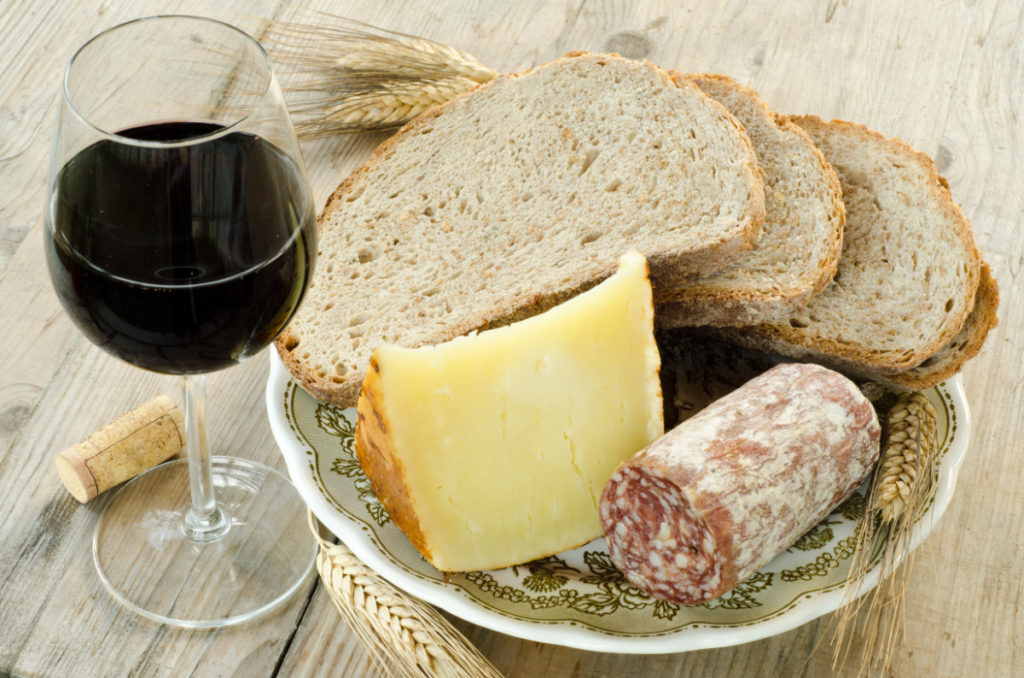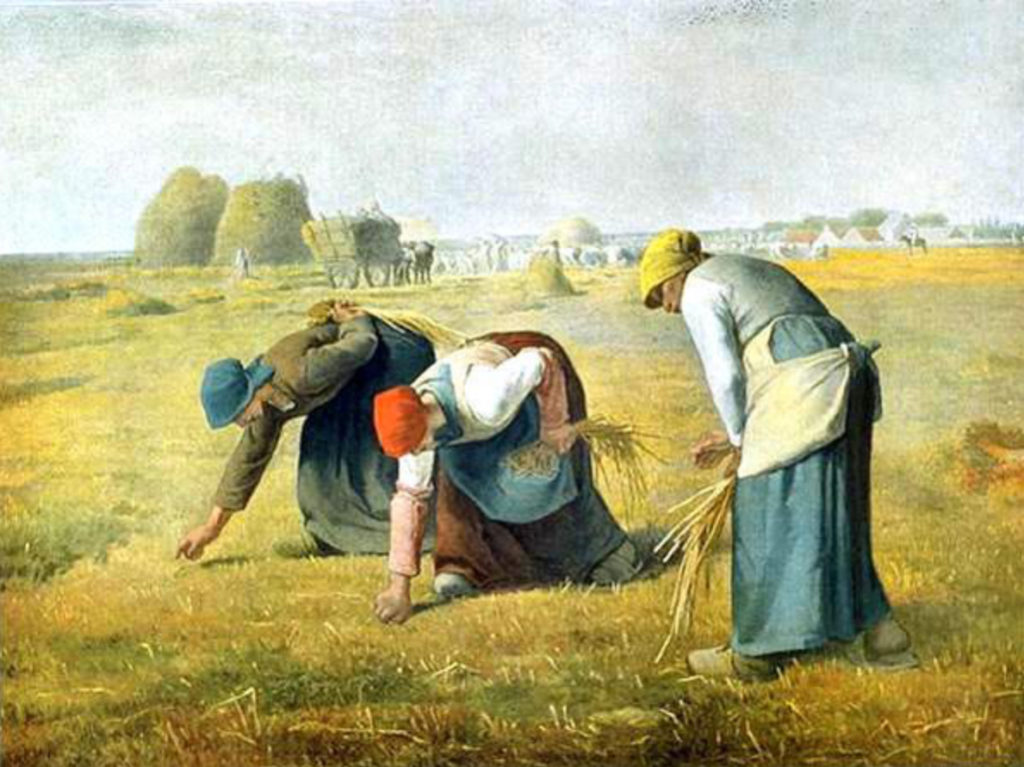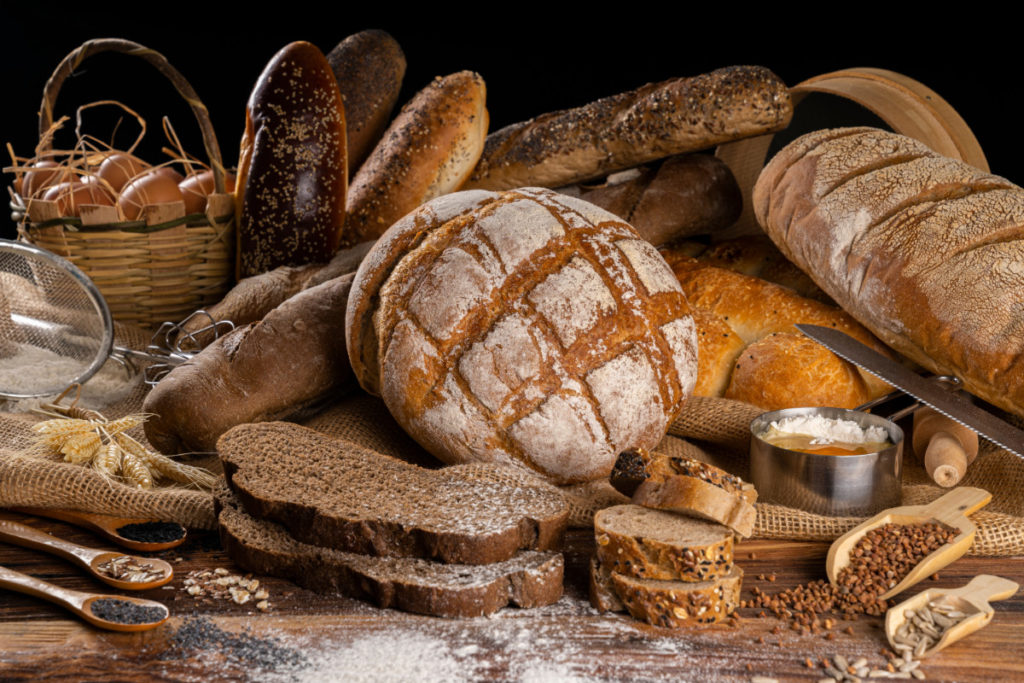
To begin, let’s square away a few questions: Who am I ?
My name is Molly. As the title indicates, I’m an American living in Provence, a region of the south of France, near Avignon to be precise. I’ve lived in France for three years, and plan to stay here indefinitely. I love wildflowers, poetry, wearing mixed patterns, and the sea, amongst many other things.
What am I doing here? In France? Digging my heels into my francophilia and putting my French degree to use. On this blog? Trying to sketch out the intersections of the different worlds I’ve lived in. An American living in France is nothing novel, so I’m not here to talk about what life in France is like. Rather, I’ll be exploring the independent and simultaneous movement of different people and ideas all within a place and culture that I’ve come to learn and love. France is a country famous for its traditions, and yet what makes this culture so rich and loveable is its permeability; it’s a culture in perpetual motion, where established tradition is in conversation with creation and evolution. What are you doing here? My guess is that you’re curious about France (me too!) and above all, the exchanges that connect us to one another (!!). Despite this presently being a monologue, I hope this can evolve into something deeper: a weaving of stories and conversations. So don’t hesitate to reach out, via the comments or email, to share your point of view, to deepen the texture of this budding project. I’m eyes and ears.
Salut, hello, bienvenue and welcome !

Thoughts on Bread
I. It’s not a real meal if there isn’t bread on the table

When asked about living in France, the conversation often turns quickly to food. And why shouldn’t it? In a country with a robust culinary tradition, food is not just a form of sustenance or a series of cultural norms–it’s an entire social philosophy, built around notions of connecting with others. France has long championed this food culture: on average, the French clock over 2 hours each day eating or drinking, double that of the United States. Then there’s the seven-plus course holiday feasts, a gustatory marathon that starts in the mid-afternoon and carries on long into the night. French chefs have cinched a worldwide reputation for their technical savoir-faire and gastronomic creativity, and the Michelin Guide is one of the world’s go-to references for restaurant awards.
Status and flair aside, good food is not just reserved for the fanciful and indulgent; it’s a motor of France’s economy. France is the leading agricultural producer in Europe, contributing 18 percent of all European agricultural production. In 2015, 54 percent of land in France was classified as agricultural, and at a commercial output of 6.1 billion euros, agro- alimentary production is the third largest economic sector in France.
Food matters to the French, all the way down to the basic components of a simple meal. And perhaps the most basic, thus fundamental, element of any French meal, gastro or familial, morning, noon, or night, is bread.
To understand the intense attachment that the French have to their bread is to understand the tumultuous, near-mythic history of bread in France. The baguette today is an institution, whose recipe is protected under the law. In 1993, the government passed a decree, updating an original 1905 law, that legally defined the fabrication and nomenclature of “French Bread”. By their definition, pain maison, or homemade bread, must be fermented, fabricated, baked, and sold under one sole establishment. If a baker wants to sell pain traditionnel français, or traditional French bread, it must be made exclusively with wheat and/ or rye flour, water and salt, fermented with a leavening agent–which has its own article defining its natural, yeast-based provenance–and cannot contain more than 3 percent the bread’s weight of other flours–rice, soy, and malt, for example.
Anything made outside of these parameters does not merit the title. seriousness reveals that bread is not so much a quirky cultural charm or a thing of lore, but a call to a deep agrarian tradition and bread’s paramount role in measuring one’s quality of life. For the pre-industrial, pre-revolution peasants, bread was a primary source of sustenance, and wheat grain itself a tax for agrarian peasants. In years with a bad harvest, chaos ensued as grain was scarce and bread prices astronomical (in 1788 and 1789, prices of bread were inflated up to 88 percent of the worker’s wage). In desperate moments, bakers might controversially cut their dough, replacing flour with inexpense and inedible fillers such as sawdust and hay. Such an unsustainable way of living evidently led to conflict and riots. In those famous years of 1788 and 1789, these riots–born from a lack of good and affordable bread–were a sign of growing class inequality that would eventually amplify into full revolution against and overthrow of the monarchy.
The United States’ history with wheat on the other hand has been driven by quite different circumstances–notably a history of expansion and productivity–that doesn’t hasn’t fostered the same kind of national-cultural ardor for bread. While this can be hastily summated in
America’s reputation for the garden-variety white bread, lacking flavor, texture, and complexity, I think a comparison of the parallel grain-cultivating histories merits a closer look. The bread we make tells us what we how we see our environment, the resources and people around us. The bread we eat tells a story of what we care about.
Next week, I’ll be talking more about bread: what makes a good loaf of bread, who makes a good loaf of bread, why we should all care deeply about the bread we eat, and where these ideas stand between two distinct, yet immense wheat-producing cultures.
II. Tasting towards a memory

What makes a good loaf of bread: a topic of debate that, since moving to France, has occupied many conversations both à table and off. A topic of debate that, like many of life’s more grand questions, seems to become more complex the more it is investigated. Like many contentious topics, the answer wavers by availability of resources and trends in taste.
The common trope about bread between France and the United States is that they (France) make good bread and we (the U.S.) do not. But to accept this claim rather flatly as truth means ignoring the historical phenomena that push each country’s respective cultural practices to the fore. One need look at the habits surrounding culinary values to understand that the soft or crusty, spongy or springy loaves that we eat result from centuries of social, economic, and environmental action in motion; that the bread we bake tastes towards the collective memory of a nation. To wonder why bread in one place is better than another, we must taste the memory that lies in each bite, in every baguette or slice of WonderBread.
With this in mind, we can think of the bread we eat today as a sort of cultural palimpsest. And so, we must begin our investigation at the base ingredient: the wheat grain.
Wheat is the third greatest-produced cereal in the world and the second-most consumed. the world’s earliest complex social systems result from the development of agricultural practice, most notably the cultivation of wheat in Mesopotamia. The cultivation of wheat is in a sense the foundation of the modern systems in which we live. Without wheat, we may not have developed the social order, technologies, and culture that define our contemporary, quotidian existence.
Why wheat? It’s a grain that can be grown easily and abundantly in temperate climates; one that is rich in energy and nutrients, with a wide possibility for transformation. Wheat can feed masses with relative ease, which is necessary for any growing society. This lends a social and political edge to wheat’s nutritional power–in France and in the United States, the price of wheat was and remains a standard in commodity exchange prices, serving as both a reference of productivity and a determiner of other agricultural commodity prices. The power of wheat transcends the general, economic movement of society, all the way down to our personal, cultural habits.
The production and distribution of wheat can be a litmus test for a nation’s social and political values. Bread–a significant food product resulting from wheat–becomes an essential cultural messenger. And it is here that the difference between American and French bread is born.
The most significant moment in the United States’ agrarian history–arguably the turning point in how we perceive, bake, and eat bread–is the Homestead Act of 1862. Signed into law by President Abraham Lincoln, the law created opportunities for American settlers in order to encourage expansion and settlement of the Western American Territories. For an arbitrary fee, homesteaders were given 160 acres of land, acquiring ownership after living on and cultivating it for five years. While homesteaders did not exclusively cultivate wheat, the American Middle West Region–the « bread basket » as it is known today–was the most affected by this wave of settlement. Between the American Civil War and World War I, this region transformed from unsettled territory to the greatest wheat-producing region in the world.
As a frontier cash crop, wheat production held a central role in the realization of the mythic, romantic American Dream. The United States’ economy and culture was built on expanse; bounty measured in terms of quantity above anything else. The trending mentalities of opportunism and rugged individualism that have long defined the United States germinate in the wheat grain, and naturally, come back around in the bread we make of it.
What does this bread look and taste like? It’s the quintessential WonderBread; mild and squishy, pre-sliced and plastic-wrapped loaves that line supermarket aisles by the hundred. It lacks flavor. It lacks substance. It is available and plenty. Unlike the peasant’s black bread of Medieval lore, it doesn’t need to pack in nutritional value because it is not made to feed a family for a week. Above all, it is a symbol of the wealth and opportunity available to those who have acquired that coveted American Dream. The bread is a call to the prosperity that American settlers have accumulated over centuries, to the promised prosperity awaiting anyone who dreams of going to the United States and having their pick amongst the mountain of loaves looming over them as they walk the bread aisle.
What’s curious is that French bread is, without hesitation, categorized as good and American bread as bad. It would be like comparing oranges with orange-flavored soda; there isn’t a substantial likeness between the two, except for certain superficial characteristics.
If bread is a manifestation of a collective history, then a preference for one or another is a matter of taste–not for the bread itself, but for a system of values working to feed a population. It is a question not just of taste, but of the experiences that form our judgments of what is important. The French, breadless and starving, revolted against and killed the monarchy. Today, it is ingrained in them that a meal is incomplete if there isn’t bread on the table. Americans, finding prosperity in abundance, find comfort in the freedom of selecting one loaf of bread amongst hundreds.
III. You are what you eat

On a quiet Wednesday morning in early May, the shop of Les Pains Volants was closed amidst a slew of national holidays, but the kitchen hummed on business as usual – mixers running, ovens preheating, the radio singing its morning news program, almost inaudibly, though apparently a permanent element of the ritual white noise of kitchen machinery. Frédéric, the baker and co-owner of the shop, and his apprentice Mathis calmly and quietly worked along. Their morning began late, at 9 AM, as they only needed to prepare the loaves slated to be baked and sold the next day.
Les Pains Volants has been in business for about two years now. The husband-and-wife duo, Frédéric and Katia, began their bakery with an emphasis on local, organic product sourcing and attentive baking methods, those which fold into their greater enterprise of living more simply and responsibly. As soon as I arrived, Frédéric had me don an apron and gave me a quick tour of the kitchen, showing me not just where every ingredient was located but where it came from. Some, like the herbes de Provence and all of their wheat flours, come from local artisans. Others need to travel a bit further to get here, like the Sel de Guérande from Brittany (Frédéric thinks the grain and flavor works better in bread than the local Sel de Camargue) and Kalamata olives from Greece.
While the project is masted by certain principles – they make their bread following traditional recipes and specific methods – they are not limited when it comes to creative experimentation. Working with local millers to source the best wheat flours, they give special attention to ancient varieties like Rouge de Bordeaux and Meunier d’Apt. These kinds of varieties are special because they are specific and original to certain regions of France, and would be used locally by the bakers of the areas, giving bread all over France its own unique, regional profile. While modern industrial baking techniques left these grains out of style, they are seeing a greater revival amongst many artisans like Frédéric. With these flours, he plays with the nuances that each grain can bring to a loaf, experimenting unique textures and flavors. The Rouge de Bordeaux has full flavor, savory and nutty, that matches a whole-wheat loaf, all the while keeping a light, springy crumb.
When I tell Frédéric that upon arriving in France I struggled to discern which flours to buy for baking, he quirked a smile, telling me, « I thought about moving to the U.S. to start a bakery there. French bakers do well there. But the access to quality products is not the same. And without good flour, you can’t make a good bread. »
It’s easy to regard French bakery as a rustic and charming, if not a bit precious, craft. But beyond the old-world veneer of the American lies a system of enormous scale and industrialization that continues endangering this craft.
In the second half of the 20th century, large-scale industrialization of agricultural practices dramatically changed both the landscape and our consumption habits. From 1955 to 2000, the percentage of agricultural exploitations of 5 hectares or less dropped from 37% to 29%, while large exploitations of 50-100 hectares or more than 100 hectares exploded from 3% to 29% and 1% to 12%, respectively. Individual exploitations have reduced dramatically, from 1,214,800 in 1979 to 457,100 in 2003. All the while business exploitations have more than doubled in that amount of time, from 47,900 to 132,700. While the volume of agricultural production doubled from 1960 to 2004, the real value of agricultural production saw a 16% decrease in those 44 years.
Consequently, food transformation became a question of productivity and profit. In bread, chemical leavening agents and more-refined wheat flour could produce larger quantities in less time. Of course, cutting time and money carries a price of its own. The heavily refined flours used in standard doughs lack much of their original nutritional substance – minerals, vitamins, fiber – leaving behind the carbohydrates that the body quickly processes into sugar. In order to quickly make fluffy, leavened bread, conventional bakers will most often use T60, T50, T45 flours – the most-refined you can find. “It’s not flour at this point, it’s just sugar,” Frédéric quips.
Faced with an overwhelming presence of industrial bakery, artisans all over France have been cropping up in recent years, reviving the longer, slower, pre-modern practices. Les Pains Volants is but one of many bakeries striving to remind people how good bread is made – reminding us that food is a fundamental part of a system of exchange and commerce, of a point of passage from the individual to the whole.
This morning, we’re making a standard dough, used for a variety of breads, as well as a batch of pain de campagne, or country bread; a staple in any boulangerie. “I use a rye starter and a dough that’s a mix of T80 and T110. That’s the traditional pain de campagne. Many bakers will use a regular wheat starter because it’s easier, then add rye flour to the dough for flavor. They call it country bread, but the standard recipe has a rye starter.”
The starter, or souche, is the root of any good bread. Making starter is astonishingly simple: equal parts water and flour are mixed and left at room temperature. All the work is then left to bacteria in the air, water, and flour, that ferment the mixture. Once active, a starter can continue to live and grow, making bread as long as its regularly fed. This is the magic of it. Starter literally brings bread to life, and reveals a profound harmony that lies at the base of even the smallest, most simple activities. Because starter comes alive by the elements of its environment, each one is a unique signature of the air, water, and soil that it lives in. Frédéric has had his current starter going for about two months now, but some people boast starters that are 100 years old.
Once the starter is active, bubbling and growing, it is mixed with flour, warm water, salt, and olive oil, then left to rise for an hour and a half. Bacteria in the water and flour begin fermenting and, catalysed by the starter, begin forming air bubbles that expand the dough.After the hour and a half, the dough is then “turned” – a brief process of pulling and folding that strengthens the gluten binds in the dough and encourages further fermentation, eventually giving the crumb a light and chewy texture, a rich and full flavor.
As we pull the dough out for turning, a warm odor – tart and nutty – bursts briefly out from the storage shelves. It doesn’t smell like bread yet, but life – a perplexing and dynamic array of odors working, somehow, in perfect concert. Perhaps it’s naïve or laughable to take such immense pleasure in the smell of fermenting dough – bread is so common, after all – but I can’t help but smile, feeling privileged to partake in such a splendid practice, bringing nature and culture together.
We turn the dough and pack it away again, letting it ferment for another hour and a half. This gives Frédéric and I some time to chat as we clean up the kitchen and prepare for upcoming batches.
–––
Neither Frédéric nor Katia were craftspeople before the bakery – he, a sommelier for international wine distribution, her a manager in industrial logistics – but both were worn out by what felt like a lack of purpose, creativity, and above all ownership of what they did. That, plus the ever-more serious environmental crisis, sparked a desire for change that would bring not only personally gratification, but a positive, concrete contribution to how we live and interact with one another.
Frédéric mentions their daughter, suggesting that her life had a significant influence in this decision. He worries for the world that she lives in, and what will become of it by the time she is at the helm. “What I’m doing is small, but it’s what I can do,” he says, almost suggesting that he is not doing enough.
It’s curious that underneath today’s endless stream information and crises, lies the expectation to acheive individual greatness that has become all the more normalized in the age of internet, accelerated capitalism, and globalized systems of exchange. Inversely, small acts seem frivilous and fruitless when held against the general anxiety that we are so insignificant, our lives so haphazard and miniscule, that we might as well preserve our energy remaining static and changing nothing. Because what does it matter? We will all be dead and the world is going up in flames and the CEOs and billionaires of this world have much higher stakes than you or I or any other chump chugging along.
But this is exactly what makes Les Pains Volants and what it stands for so important. Frédéric and Katia have decided, against all conventional systemic behaviors, that it is worthwhile to act, to create, and to share in ways that are a strangely cohesive marriage of the traditional and the progressive. Baking bread in the way of our ancestors is not the invention of Facebook, nor the development of technologies that could potentially land us on viable moon colonies. But why are these astronomical markers the signs that we use to gauge success, in a time when they are the very ventures that are further entangling us in the gross mess we’ve put ourselves in?
The acts of baking bread and breaking bread are not just questions of economy and survival. They are the substance of traditions that bind us and allow us – through the humble, human exchanges – to negotiate the similarities and differences in our individual lives, that help us define our place inside a living, moving system. If we wish to make meaningful sense of the chaotic spew of contemporary life, perhaps we ought to turn to the very substance that jump-started our social orders and cultural traditions, and try to appreciate the life bubbling up inside of it.